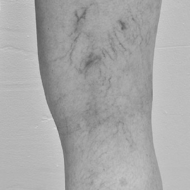
Why Women are More Prone to Developing Varicose — Spider Veins than Men?
Varicose — Spider Veins & Women
When it comes women and varicose veins, multiple studies have shown that women tend to be at higher risk than men for developing the bulging, purplish, often painful vessels. Varicose veins and spider veins are very common, affecting about 40 percent of men and 70 percent of women by age 60.
But why is that?
First let’s try to understand the causes:
Varicose Veins Are Caused by Weak Valves
The veins in your legs have to work harder to do this since they are pumping blood against the gravity. Valves are designed to be one-way only, but if the valves are weak or get damaged, they let blood flow backwards and pool in your veins, creating the bulge you see in varicose veins.
Heredity Is the Largest Risk Factor
Varicose Veins are a genetic problem with more than 70 to 80 percent of patients with varicose veins having a relative with varicose veins.
Pregnancy Is a Big Factor
Pregnancy is a big factor because you produce up to 50 percent more blood to support the fetus. This happens when the uterus applies pressure to the large vein (the inferior vena cava) that carries blood back to the heart from your feet and legs.
Are Progesterone Levels and Varicose Veins Related?
In women, in addition to contributing to the regulation of menstrual cycles and the maintenance of several organs, progesterone also causes blood vessel walls to relax. Researchers observe that when these walls relax, the tiny valves that control the flow of blood within the vessels also relax. As a result, the pressure exerted by blood as it’s flowing pushes out on the sides of the vessels, making them weaker. And because women have considerably higher levels of progesterone than men — in fact, in women progesterone is one of the primary sex hormones — researchers believe this is at least one reason why women are more prone to developing varicose veins more than men.
Lifestyle Issues, do they matter?
Varicose veins can become itchy, uncomfortable, or even painful. Unlike popular conceptions, crossing your legs or wearing high heels do not contributes to varicose veins. However, being overweight and having a job that involves long periods of standing does make a difference.
What Kind of Treatments Are Women Specific?
Some of the treatments available for women are:
Sclerotherapy.
Foam sclerotherapy of large veins.
Laser treatment.
Catheter-assisted procedures using radiofrequency or laser energy.
High ligation and vein stripping.
Ambulatory phlebectomy (fluh-BEK-tuh-me).
Endoscopic vein surgery.
What Can You Do Next?
Call Us 24/7
95% of the Treatment May Be Covered by Insurance.
877–659-2589
